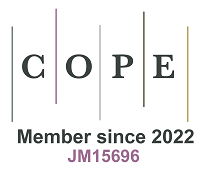REFERENCES
1. Yang X, Shang G. Smallholders’ Agricultural Production Efficiency of Conservation Tillage in Jianghan Plain, China-Based on a Three-Stage DEA Model. Int J Environ Res Public Health 2020;17:7470.
2. Raheli H, Rezaei RM, Jadidi MR, Mobtaker HG. A two-stage DEA model to evaluate sustainability and energy efficiency of tomato production. Inf Process Agric 2017;4:342-50.
3. Gunes E, Guldal HT. Determination of economic efficiency of agricultural enterprises in Turkey: A DEA approach. New Medit 2019;18:4.
4. Pishgar-Komleh SH, Zylowski T, Rozakis S, Kozyra J. Efficiency under different methods for incorporating undesirable outputs in an LCA+ DEA framework: A case study of winter wheat production in Poland. J Environ Manage 2020;260:110138.
5. Vlontzos G, Pardalos PM. Assess and prognosticate green house gas emissions from agricultural production of EU countries, by implementing, DEA Window analysis and artificial neural networks. Renew Sust Energ Rev 2017;76:155-62.
6. Angulo-Meza L, González-Araya M, Iriarte A, Rebolledo-Leiva R, de Mello JCS. A multiobjective DEA model to assess the eco-efficiency of agricultural practices within the CF + DEA method. Comput Electron Agric 2019;161:51-161.
7. Guth M, Smędzik-Ambroży K. Economic resources versus the efficiency of different types of agricultural production in regions of the European Union. Economic research-Ekonomska istraživanja 2020;33:1036-51.
8. Gong S, Shao C, Zhu L. Energy efficiency evaluation based on DEA integrated factor analysis in ethylene production. Chin J Chem Eng 2017;25:793-9.
9. Storto C. The analysis of the cost-revenue production cycle efficiency of the Italian airports: A NSBM DEA approach. J Air Transp Manag 2018;72:77-85.
10. Zeng X, Zhou Z, Liu Q, Xiao H, Liu W. Environmental efficiency and abatement potential analysis with a two-stage DEA model incorporating the material balance principle. Comput Ind Eng 2020;148:106647.
11. Geng Z, Zeng R, Han Y, Zhong Y, Fu H. Energy efficiency evaluation and energy saving based on DEA integrated affinity propagation clustering: Case study of complex petrochemical industries. Energy 2019;179:863-75.
12. Sremac S, Stević Ž, Pamučar D, Arsić M, Matić B. Evaluation of a third-party logistics (3PL) provider using a rough SWARA-WASPAS model based on a new rough dombi aggregator. Symmetry 2018;10:305.
13. Yücenur GN, Ipekçi A. SWARA/WASPAS methods for a marine current energy plant location selection problem. Renewable Energy 2020;163:1287-98.
14. Baç U. An Integrated SWARA-WASPAS Group decision making framework to evaluate smart card systems for public transportation. Mathematics 2020;8:1723.
15. Yörükoğlu M, Aydın S. Digital library evaluation by SWARA-WASPAS method. International Journal of Industrial and Manufacturing Engineering 2020;14:449-52. Available from:
16. Singh RK, Modgil S. Supplier selection using SWARA and WASPAS-a case study of Indian cement industry. Meas Bus Excell 2020;24:243-65.
17. Charnes A, Cooper WW, Rhodes E. Measuring the efficiency of decision making units. Eur J Oper Res 1978;2:429-44.
18. Keršuliene V, Zavadskas EK, Turskis Z. Selection of rational dispute resolution method by applying new step-wise weight assessment ratio analysis (SWARA). J Bus Econ Manag 2010;11:243-58.
19. Zavadskas EK, Turskis Z, Antucheviciene J, Zakarevicius A. Optimization of weighted aggregated sum product assessment. Elektron ir elektrotechnika 2012;122:3-6.
20. Zavadskas EK, Turskis Z. A new additive ratio assessment (ARAS) method in multicriteria decision-making. Technol Econ Dev Econ 2010;16:159-72.






